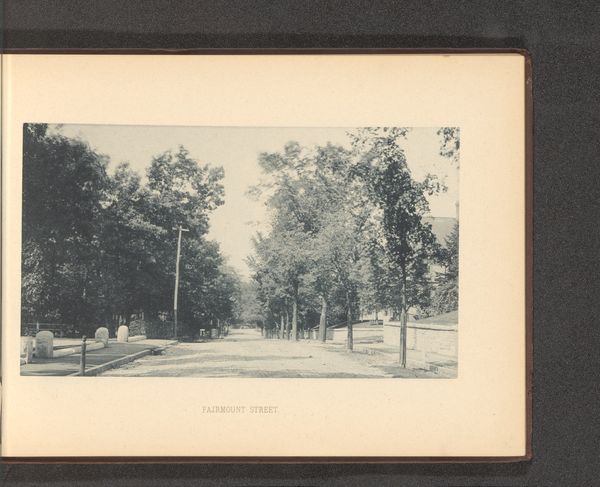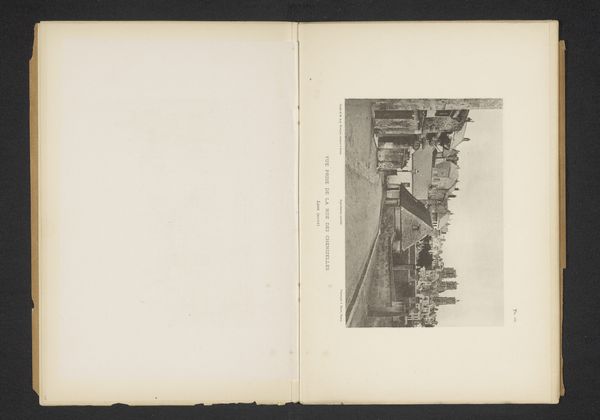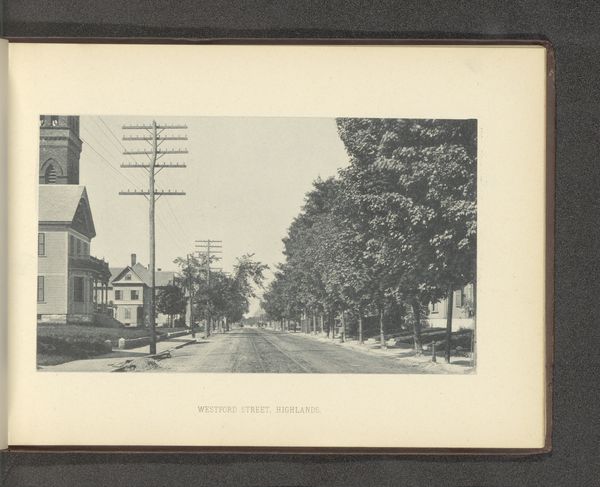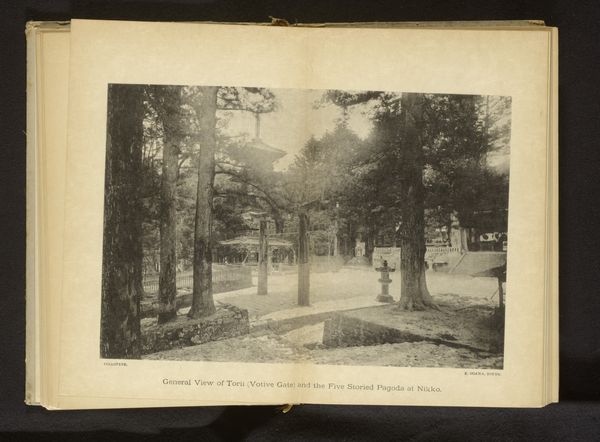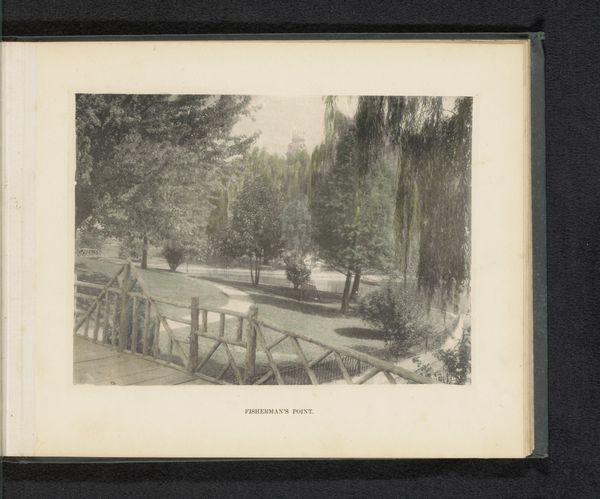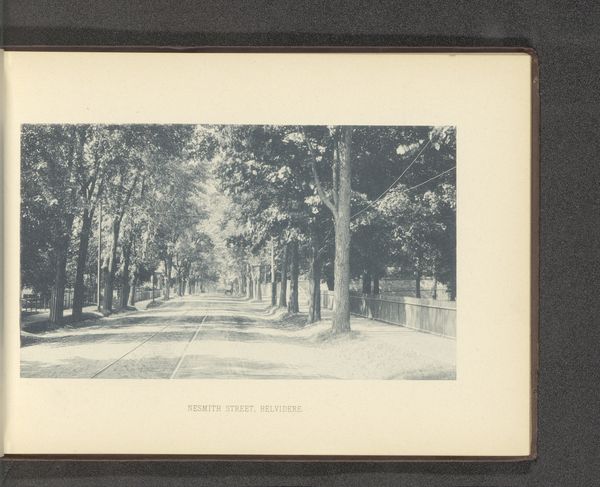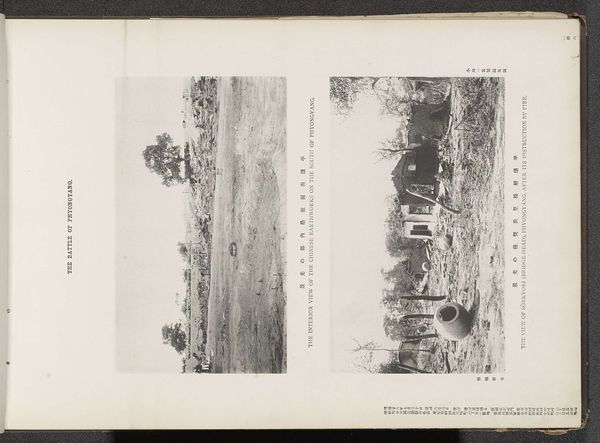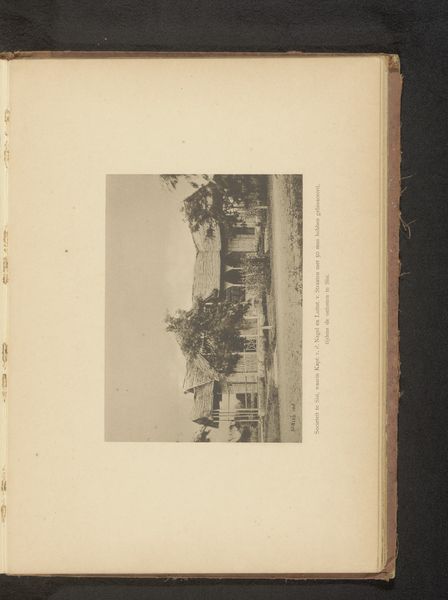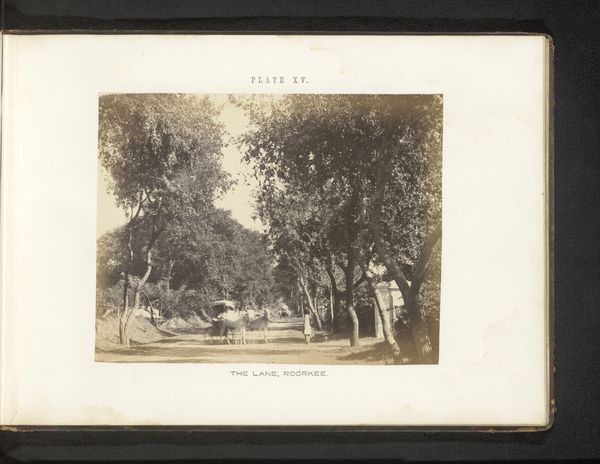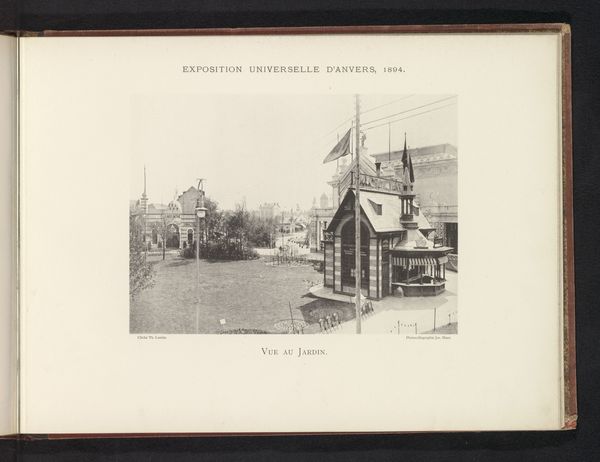
Expositie van een gigantische boom en een kristalgrot op de wereldtentoonstelling te Antwerpen 1894
0:00
0:00
Dimensions: height 160 mm, width 219 mm
Copyright: Rijks Museum: Open Domain
Curator: Let's consider this striking print from 1894 by Hippolyte Wouwermans titled "Expositie van een gigantische boom en een kristalgrot op de wereldtentoonstelling te Antwerpen," or "Exhibition of a Giant Tree and a Crystal Grotto at the World's Fair in Antwerp." It appears to be a photograph of a street scene featuring some rather large and unusual constructions. What are your first impressions? Editor: A curious image, definitely! The eye is drawn to the fantastical—this constructed tree looming above what looks like typical storefronts. It strikes me as slightly unsettling; the monumental artificiality set against the everyday creates a strange dissonance. Curator: Exactly. The image speaks to the spectacle and ambition of World's Fairs during that period. They served as showcases of industrial progress and, crucially, imperial power. What's interesting here is how Wouwermans captures a constructed landscape that served as both entertainment and propaganda. What symbols or deeper resonances do you notice? Editor: I immediately focus on the contrast. The 'giant tree,' clearly a feat of engineering, likely symbolizes nature tamed by industry and, metaphorically, the reach and dominance of the Belgian colonial project in the Congo. Juxtapose that with the 'crystal grotto,' an idealized, manufactured cave suggesting hidden resources and perhaps wealth. It evokes ideas of extraction. Curator: That is incisive. Considering Antwerp was a major port and gateway to the Congo, the fair arguably used these manufactured realities to normalize exploitative power dynamics for its citizens. There’s an interesting visual hierarchy, too: the 'tree' towers over the 'grotto', perhaps unintentionally pointing to a vertical hierarchy that's echoed throughout society. Editor: Right. I also wonder how people experienced these spaces. The photograph lacks a human presence save for one lone figure. Were people simply passive observers, or were they active participants in the construction of this colonial narrative? Perhaps the symbolism was obvious; maybe it wasn’t. That's what intrigues me. Curator: Indeed. Wouwermans gives us a compelling visual document of how ideologies were made manifest in these ephemeral, yet culturally impactful, constructed environments. Thank you, this lens offers invaluable insight into the work. Editor: It is quite fascinating how art, even something seemingly as straightforward as a photograph, can offer layers of understanding about our past and, ultimately, inform our present.
Comments
No comments
Be the first to comment and join the conversation on the ultimate creative platform.
